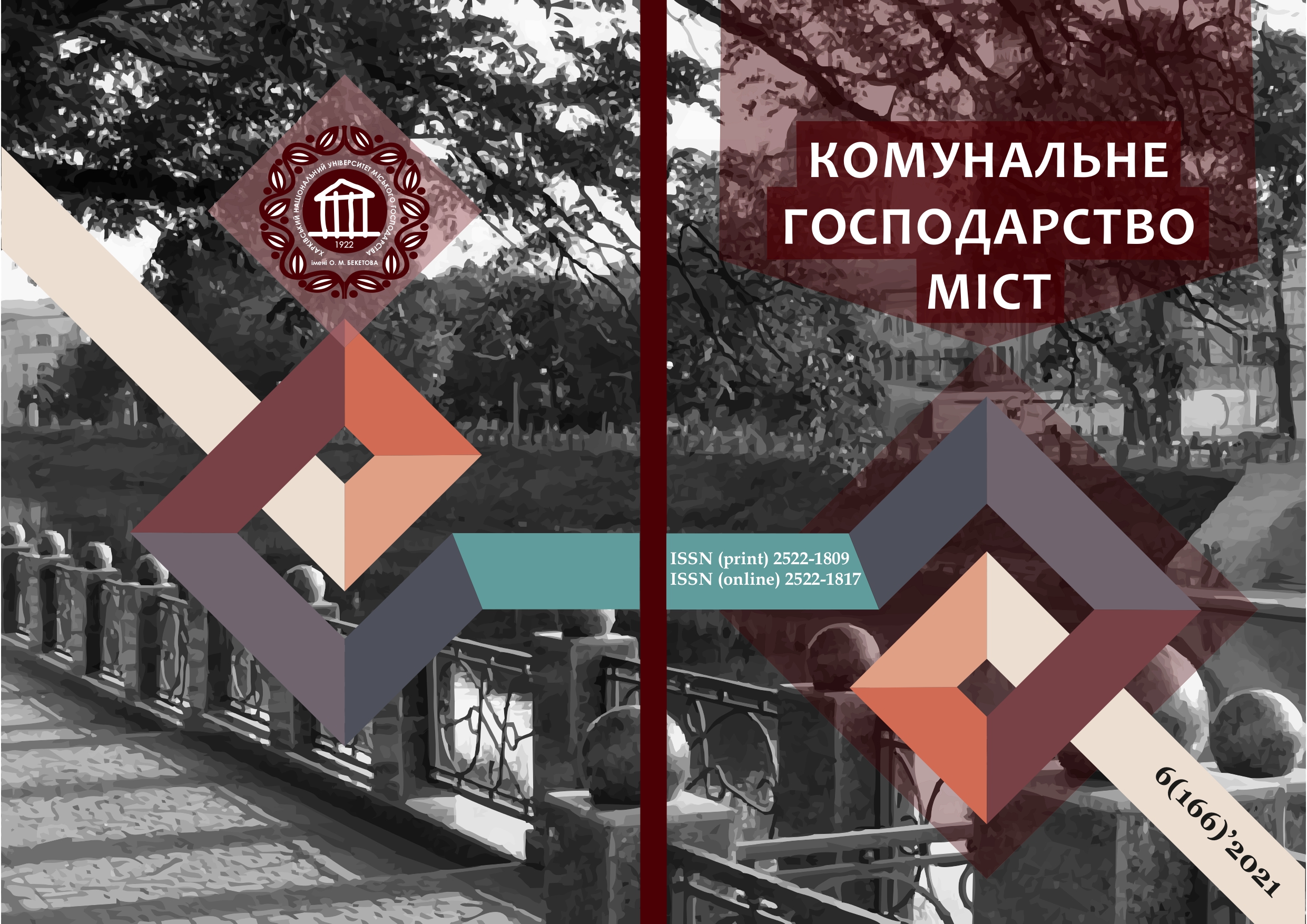МЕТОДИКИ ОТРИМАННЯ Й ВИКОРИСТАННЯ ЯКІСНИХ ДАНИХ У ПРАКТИЦІ МІСЬКОГО ПЛАНУВАННЯ
Array
Ключові слова:
міське планування, ідентичність місця, просторові тактики, просторові знання.Анотація
На прикладі ініціатив дніпровської спілки архітекторів під час загальноукраїнського фестивалю “Міста України” розглянуто, як в міському плануванні враховуються питання ідентичності місця, просторових практик городян та кооперації владних структур, бізнесу і місцевої громади. Міське планування трактується як процес перемовин і узгоджень, що засвідчують зміни у взаємодії офіційних та неофіційних планувальних практик.
Посилання
2. Law of Ukraine On cooperation of local communities from June 17 2014, No. 1508-VII. URL: http://zakon4.rada.gov.ua/laws/show/1508-18 [in Ukrainan]
3. Blinova, M.Y., & Ilchenko, S.A. (2020, August). The actualization of the garden city model in modern urban planning with participation practices (on the example of Grabnyk park renewal in the city of Rivne). IOP Conference Series: Materials Science and Engineering, 907(1), 012002). DOI: http://dx.doi.org/10.1088/1757-899X/907/1/012002
4. Martin, D.G. (2003). “Place-framing” as place-making: Constituting a neighborhood for organizing and activism. Annals of the Association of American Geographers, 93(3), 730 –750. DOI: https://doi.org/10.1111/1467-8306.9303011
5. Harvey, David. (2012). Rebel Cities: From the Right to the City to the Urban Revolution. New York, Verso Books.
6. Castells, M. (2011). The power of identity (Vol. 14). John Wiley & Sons.
7. Ilchenko, S. (2021). “Reclaiming” the City: A Collective Endeavor. Dimensions, 2(1), 183–202. DOI: https://doi.org/10.14361/dak-2021-0214
8. Bradley, Q. (2018). Neighbourhood planning and the production of spatial knowledge. Town Planning Review, 89(1), 23–42. DOI: http://dx.doi.org/10.3828/tpr.2018.2
9. Meijer, M., & Syssner, J. (2017). Getting ahead in depopulating areas-How linking social capital is used for informal planning practices in Sweden and The Netherlands. Journal of Rural Studies, 55, 59–70. DOI: https://doi.org/10.1016/j.jrurstud.2017.07.014
10. Woolcock, M. (1998). Social capital and economic development: Toward a theoretical synthesis and policy framework. Theory and society, 27(2), 151–208. DOI: https://doi.org/10.1023/A:1006884930135
11. Arrow, K. J. (1974). The limits of organization. WW Norton & Company.
12. Innes, J.E., & Booher, D.E. (2015). A turning point for planning theory? Overcoming dividing discourses. Planning theory, 14(2), 195–213. DOI: https://doi.org/10.1177%2F1473095213519356
13. Castells, M. (2013). Communication power. OUP Oxford.
14. Workshop “Murals of the Dnieper”. Architectural festival “Cities of Ukraine” Public group. URL: https://www.facebook.com/groups/677404975759288/posts/677437049089414/
15. Balandier, G. (2006). Le pouvoir sur scènes. Fayard.
16. Campos, R. (2016). Visibilidades e Invisibilidades Urbanas. Revista de Ciências Sociais, 47(1), 49–76.
17. De Certeau, M., & Mayol, P. (1998). The Practice of Everyday Life: Living and Cooking. Volume 2 (Vol. 2). U of Minnesota Press.
18. Gielen, P. (2015). Performing the common city: On the crossroads of art, politics and public life. Interrupting the city: Artistic constitutions of the public sphere (pp. 273–298). Valiz.
19. Foucault, M. (1977). Discipline and punish: The birth of the prison (A. Sheridan, Trans.)
20. Lynch, K. (1960). The image of the city (Vol. 11). MIT press.
21. Sociological survey. Architectural festival "Cities of Ukraine". Public group. URL: https://www.facebook.com/groups/677404975759288/posts/695345620631890
22. Ilchenko, S. (2021). The Impact of Migrant Peasants on Urban Space (Ho Chi Minh City — Gành Dầu). Municipal Economy of Cities, 3(163), 94–102. URL: https://doi.org/10.33042/2522-1809-2021-3-163-94-102
23. Douglass, M., & Huang, L. (2007). Globalizing the city in Southeast Asia: Utopia on the urban edge–the case of Phu My Hung, Saigon. Ijaps, 3(2), 1–42.
24. Mora, H., Pérez-del Hoyo, R., Paredes-Pérez, J.F., & Mollá-Sirvent, R.A. (2018). Analysis of social networking service data for smart urban planning. Sustainability, 10(12), 4732. DOI: https://doi.org/10.3390/su10124732
25. Van Assche, K., Beunen, R., & Duineveld, M. (2013). Formal/informal dialectics and the self-transformation of spatial planning systems: An exploration. Administration & Society, 46(6), 654–683. DOI: http://dx.doi.org/10.1177/0095399712469194
26. Architectural festival "Cities of Ukraine". Workshop 2020 "Globa.L park". URL: https://www.facebook.com/groups/677404975759288/posts/1844087612424346 829-849
##submission.downloads##
Опубліковано
Як цитувати
Номер
Розділ
Ліцензія
Автори, які публікуються у цьому збірнику, погоджуються з наступними умовами:
- Автори залишають за собою право на авторство своєї роботи та передають журналу право першої публікації цієї роботи на умовах ліцензії CC BY-NC-ND 4.0 (із Зазначенням Авторства – Некомерційна – Без Похідних 4.0 Міжнародна), котра дозволяє іншим особам вільно розповсюджувати опубліковану роботу з обов'язковим посиланням на авторів оригінальної роботи та першу публікацію роботи у цьому журналі.
- Автори мають право укладати самостійні додаткові угоди щодо неексклюзивного розповсюдження роботи у тому вигляді, в якому вона була опублікована цим журналом (наприклад, розміщувати роботу в електронному сховищі установи або публікувати у складі монографії), за умови збереження посилання на першу публікацію роботи у цьому журналі.
- Політика журналу дозволяє і заохочує розміщення авторами в мережі Інтернет (наприклад, у сховищах установ або на особистих веб-сайтах) рукопису роботи, як до подання цього рукопису до редакції, так і під час його редакційного опрацювання, оскільки це сприяє виникненню продуктивної наукової дискусії та позитивно позначається на оперативності та динаміці цитування опублікованої роботи (див. The Effect of Open Access).

